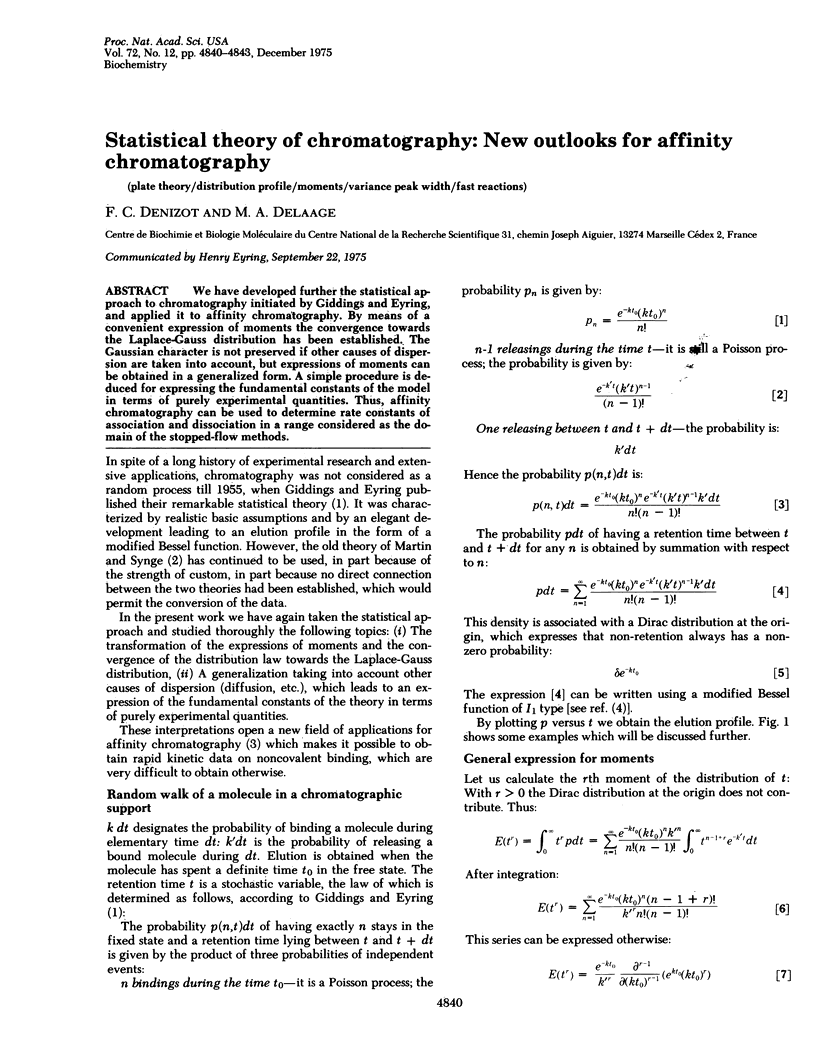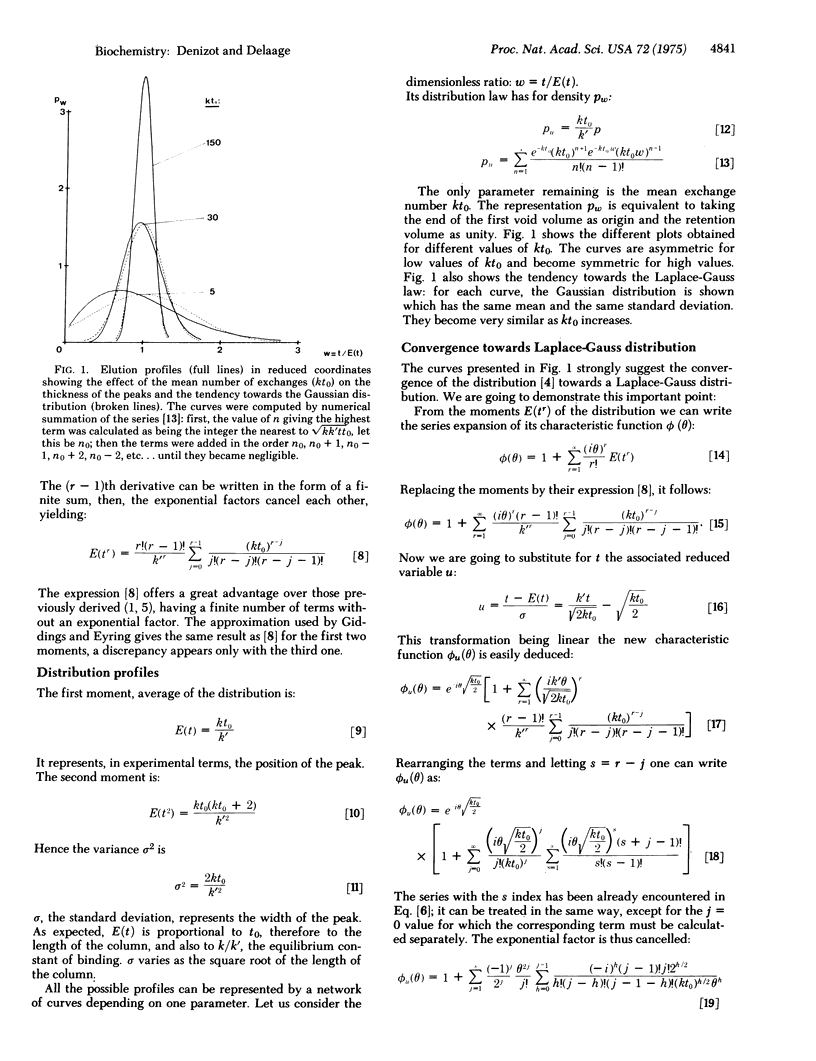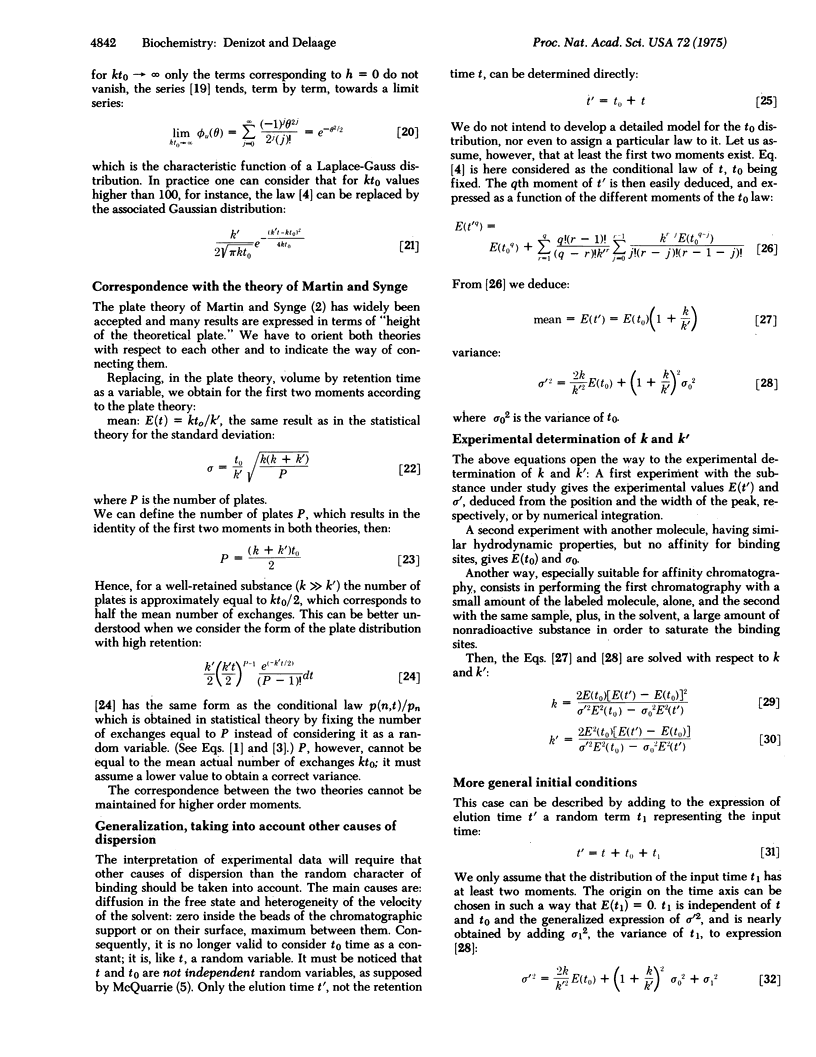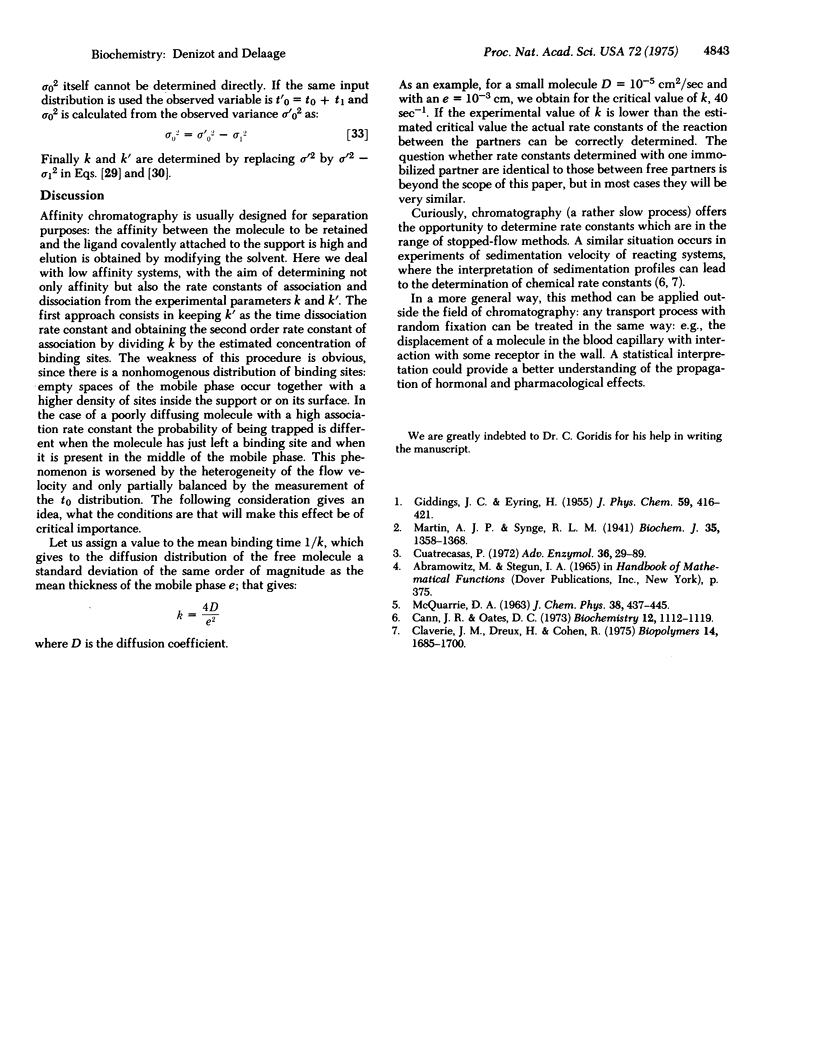Abstract
We have developed further the statistical approach to chromatography initiated by Giddings and Eyring, and applied it to affinity chromatography. By means of a convenient expression of moments the convergence towards the Laplace-Gauss distribution has been established. The Gaussian character is not preserved if other causes of dispersion are taken into account, but expressions of moments can be obtained in a generalized form. A simple procedure is deduced for expressing the fundamental constants of the model in terms of purely experimental quantities. Thus, affinity chromatography can be used to determine rate constants of association and dissociation in a range considered as the domain of the stopped-flow methods.
Full text
PDF



Selected References
These references are in PubMed. This may not be the complete list of references from this article.
- Cann J. R., Oates D. C. Theory of electrophoresis and sedimentation for some kinetically controlled interactions. Biochemistry. 1973 Mar 13;12(6):1112–1119. doi: 10.1021/bi00730a015. [DOI] [PubMed] [Google Scholar]
- Claverie J. M., Dreux H., Cohen R. Sedimentation of generalized systems of interacting particles. I. Solution of systems of complete Lamm equations. Biopolymers. 1975 Aug;14(8):1685–1700. doi: 10.1002/bip.1975.360140811. [DOI] [PubMed] [Google Scholar]
- Cuatrecasas P. Affinity chromatography of macromolecules. Adv Enzymol Relat Areas Mol Biol. 1972;36:29–89. doi: 10.1002/9780470122815.ch2. [DOI] [PubMed] [Google Scholar]
- Martin A. J., Synge R. L. A new form of chromatogram employing two liquid phases: A theory of chromatography. 2. Application to the micro-determination of the higher monoamino-acids in proteins. Biochem J. 1941 Dec;35(12):1358–1368. doi: 10.1042/bj0351358. [DOI] [PMC free article] [PubMed] [Google Scholar]


